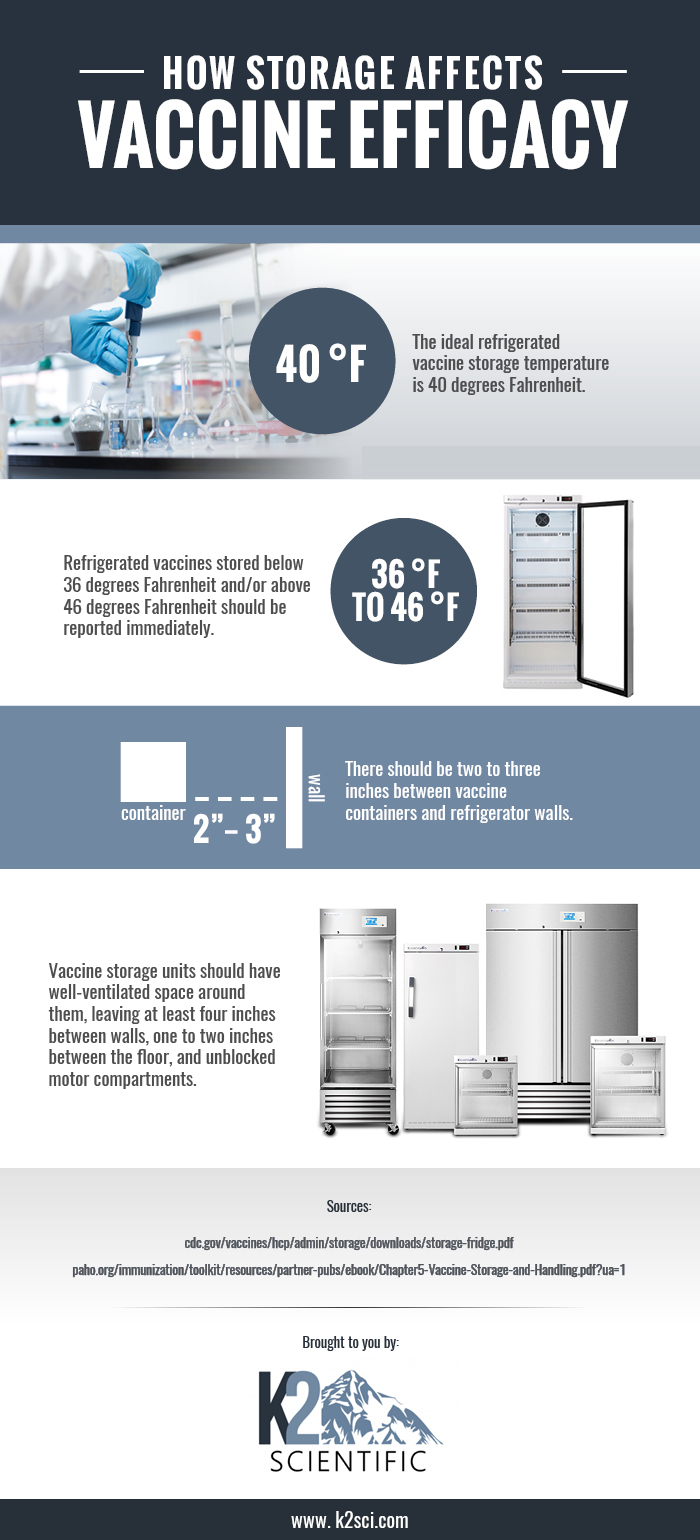When working in a laboratory, individuals need to pay the utmost attention to the details of their surroundings; caring for vaccines is no different. Their incredibly fragile nature means that a few minutes spent outside the ideal temperature range can result in an ineffective product — this costs the lab time and money to replace, while also depriving patients of much-needed vaccinations.
Understanding how to store and care for these delicate vaccines is crucial to the success of the laboratory and the health of the patients. Each vaccine has its own ideal temperature (either frozen or refrigerated); here are some helpful facts about refrigerated vaccines to keep your lab running smoothly and your patients safely inoculated.

Ideal Temperature Range
Refrigerated vaccines should be stored at 40 degrees Fahrenheit, but can continue to function between 36 and 46 degrees Fahrenheit. All vaccine refrigerators need their own calibrated thermometer, which should be checked and logged every day. Remember, the success of the vaccine depends on its carefully maintained storage.
It’s important to note that vaccines are comprised of live viruses — if they fall outside of these temperature ranges, for any period of time (no matter how brief), they may begin to deteriorate, compromising their efficacy. As a result, any discrepancies outside the limited window of temperatures should be immediately reported.
Give Them Space
Separating different vaccines from each other and the refrigerator walls serves as a two-fold security measure: clear distinction avoids confusion (you don’t want to grab the wrong vaccine by mistake) and ensures that the temperature will stay as balanced and even as possible. Ensure that vaccine containers are kept at least two to three inches away from the refrigerator walls and are visibly separated from each other.
Additionally, you’ll want to guarantee that the refrigerator itself has enough room to breathe; well-ventilated spaces around the entire unit can safeguard against temperature changes and discrepancies. Make sure the refrigerator is at least 4 inches away from walls, one to two inches off of the floor, and has unblocked motor compartments.
